


Books in series

#1
Charles M. Schulz
Conversations
2000
A biography in interviews of one of America's best-loved comic strip masters
Through his comic strip Peanuts, Charles M. Schulz (1922-2000) has left his signatures on American culture—Lucy's fake hold for the kickoff, Linus' security blanket, Charlie Brown's baseball team that never wins a game, and his everyman's cry of "Good Grief!"
When Schulz died February 13, 2000, the eve of publication for the last Sunday strip he would draw, the world mourned the passing of a gentle humorist and minimalist innovator, a comic strip artist who had become one of America's major pop philosophers, theologians, and psychologists in the last half of the twentieth century.
Charles M. Schulz: Conversations reveals that man, open and warm once a conversation began. During his career, his little kid characters and Snoopy and Woodstock appeared for 355 million readers in 2,600 papers in 75 countries, in 30 television specials and four feature films, and in an off-Broadway musical. Selected from over 300 interviews published between 1957 and the present, this collection serves as a celebration of the popular strip's 50th anniversary on October 2, 2000, and as a lasting tribute to the man friends called "Sparky."
Schulz talks at length about life, theology, sports, the art of the comic strip, and the human condition in general. He ruminates as well on the origins and the importance of Charlie Brown, Lucy, Snoopy, and friends as icons of the American imagination. America's most universally admired and respected comic artist talks about how his own life and insecurities have inspired some of his finest moments in comic strip history.
Until Schulz's retirement, he never missed a deadline and was totally responsible for writing, drawing, and lettering the feature every day, a record matched by no other cartoonist in newspaper history.
Including dozens of classic Peanuts strips, this volume suggests that if we had only one artifact for deposit in a time capsule, something to tell future historians what life in the late twentieth century was all about, we could do no better than to enclose a complete run of Peanuts.
M. Thomas Inge, a friend of Schulz's for many years, is Robert Emory Blackwell Professor of Humanities at Randolph-Macon College. He has authored or edited over 40 volumes, including Conversations with William Faulkner (University Press of Mississippi, 1999).

#2
Milton Caniff
Conversations
2002
In this collection of more than a dozen interviews, one of the giants of American comic strips talks about his life and his craft. The years spanning 1937 to 1986, when the interviews were conducted, embrace almost all of Caniff's career as he was producing the legendary Terry and the Pirates and his post-World War II masterpiece Steve Canyon .
In long interviews with such comics luminaries as Jules Feiffer and Will Eisner, Caniff (1907–1988) discusses his signature chiaroscuro style, his passion for realism in every detail, and his relationships with such other cartooning greats as Al Capp ( Li'l Abner ), Noel Sickles ( Scorchy Smith ), and Alex Raymond ( Flash Gordon ).
As Caniff speaks earnestly about his art, his techniques, and his intentions, he discloses his inspirations. He based his characters on real people and his material on contemporary politics and military issues. He gives candid opinions about the effects of the marketplace, business, and sales upon his art. “I would have created Blondie if I'd known that I could have sold it, you can be damn sure.” He notes that the cause for terminating his association with Terry and the Pirates and his creation of Steve Canyon was neither lack of interest nor censorship but the opportunity to exert full creative control over his work.
Few of the interviews in this volume are likely to have been seen or read widely, for most have been gleaned from publications not in general circulation. Interviews from US military publications attest to Caniff's status as a spokesman for the military, particularly for the Air Force. These interviews reveal how Caniff contributed to uplifting servicemen's wartime morale with both Terry and the Pirates and Male Call, a somewhat risqué strip he drew for military newspapers, and how Caniff's loyalty to the military cost his strip vital circulation as Vietnam War protest mounted.
Besides interviews this collection includes rare examples of Caniff's graphic art―preliminary sketches for Steve Canyon, pin-ups from military publications, drawings he created for the magazine of his college fraternity, and samples of vintage strips he drew.

#4
R. Crumb
Conversations
2004
R. Crumb's illustrations have appeared on the covers of albums by Big Brother and the Holding Company, on bootlegged T-shirts, and in several underground newspapers. He is, however, first and foremost, known as the father of underground comics and for work that paved the way for both satirical comics and autobiographical work in the comics medium.
He has been compared favorably to Brueghel, demonized as a misogynist, defended by feminists, and portrayed as the subject of Crumb, an award-winning documentary film. Having created such iconic characters as Mr. Natural, Fritz the Cat, and even himself as part of his cartoon universe, R. Crumb (b. 1943) is firmly established as one of the most significant, controversial, and technically gifted cartoonists of the second half of the twentieth century.
R. Conversations collects interviews that span the late 1960s to the beginning of the twenty-first century. In these Crumb proves to be iconoclastic, opinionated, and—despite his celebrity—impervious to the commercial moods of the public.
Crumb appears alternately as neurotic, witty, acerbic, gentlemanly, cruel, verbose, and reticent. His persona in comics form (as an unattractive, continually nervous, lecherous, obsessive man) is both confirmed and challenged by the person who emerges from these interviews.
Gathered here are interviews and profiles that extend over the various periods and events in his life and work, including his early days as a countercultural figure in San Francisco, his verging on a nervous breakdown after the release of the X-rated film Fritz the Cat, his editing the groundbreaking comics anthology Weirdo, his move to France in the 1990s, and the resurgence of his popularity when Crumb was released.

#5
Mort Walker
Conversations
2005
When Mort Walker (1923–2018) was ten years old, he received an inscribed Moon Mullins cartoon from its creator Frank Willard that read, “Say Morton, those drawings you sent me were swell―I'll bet you'll be a big-shot cartoonist someday.” By the time he was fifteen, Walker was a comic strip artist for a daily metropolitan newspaper. By the time he was eighteen, he was chief editor of Hallmark Cards.
In 1950, King Features picked up his strip Beetle Bailey for syndication. Four years later, Walker created a spin-off of Beetle Bailey called Hi and Lois . Beetle Bailey was distributed to roughly 1,800 newspapers, and Walker was one of the most widely read cartoonists in American history and a legend in his own time.
Mort Conversations collects interviews and articles that span from 1938 to 2004. His engagement with the Museum of Cartoon Art―which he founded―is discussed in these pieces, along with the politics involved in working with cartoonists' unions, artistic communities, and syndications. In these conversations Walker shows how he managed to keep his art and stories fresh for over seventy years of production.

#8
Stan Lee
Conversations
2007
Stan Lee (1922-2018), cocreator of the Amazing Spider-Man, the Fantastic Four, the Incredible Hulk, and the Uncanny X-Men, is one of the most successful writers and publishers of comics. During the 1960s and 1970s, he wrote superhero adventures for Marvel Comics. His storylines imbued the genre with angst and contemporary politics and focused as much on the personal lives of his characters as on heroics. His work, in collaboration with cartoonists such as Jack Kirby and Steve Ditko, remains deeply influential. His role as a spokesperson and impresario for Marvel paved the way for the superhero genre to be taken seriously by the critical establishment and for the penetration of Marvel Comics into mainstream American culture. Stan Conversations collects interviews ranging from 1968 to 2005. Lee's charm, good humor, and keen business sense are on display. He has spirited conversations with cartoonists Jack Kirby, Harvey Kurtzman, and Roy Thomas, talk show host Dick Cavett, and Jenette Kahn (head of DC Comics, Marvel's rival), among others. He talks with candor about his creative process, publishing, film and television adaptations of his comic books, and the evolution of the comics industry. The volume concludes with a new interview conducted by the editor.

#9
Art Spiegelman
Conversations
2007
When the graphic novel A Survivor's Tale won a Special Pulitzer Prize in 1992 for its vivid depiction of the Holocaust and its effects, critics and mainstream audiences recognized that a comic book was capable of exploring complex aesthetic, moral, and cultural themes. Maus 's creator Art Spiegelman (b. 1948) became the most famous alternative cartoonist in America.
Art Conversations reveals an artist who had long been working to establish comics as a serious art form. With his wife Françoise Mouly, he founded and edited RAW -the most in-fluential showcase for avant-garde comics in America-which published early work by such well-established cartoonists as Chris Ware, Kaz, and Gary Panter. Spiegelman's essays and lectures helped to establish that comics have a history and a canon.
This collection of interviews and profiles spans 1976-2006 and covers Spiegelman's career as an artist, critic, educator, and art historian. A previously unpublished interview conducted by the volume's editor discusses themes rarely touched upon in earlier profiles.

#10
Harvey Pekar
Conversations
2008
Harvey Pekar's "American Splendor" is the longest-running and arguably the most influential autobiographical comic book series produced in America. Since 1976, Pekar (b. 1939) has reported on his life through his comics. Pekar's comic books deal with his life as a Veterans Administration clerk and freelance music critic; his friends and co-workers and their stories; and his home city of Cleveland. Pekar's struggles with physical and mental problems, a low-paying job, Hollywood, marriage, his daughter's adoption, and success are all laid out in his comics. Pekar prides himself on depicting his life in all its "splendor."
"Harvey Pekar: Conversations" offers almost twenty-five years of interviews from a variety of sources including small fanzines, local public radio shows, and the "Washington Post." The volume reveals his thoughts and feelings about comics, autobiography, his appearances on David Letterman's show in the 1980s, his life with cancer, and how a successful 2003 movie adaptation of "American Splendor" has changed and not changed his life. His comics work has won the National Book Award, spawned theatrical productions, and served as the basis for the award-winning movie starring Paul Giamatti as Pekar.
Michael G. Rhode is an independent comics scholar and an editor of the "International Journal of Comic Art." His work has been published in the "Comics Journal" and "Hogan's Alley."

#11
Daniel Clowes
Conversations
2010
Daniel Clowes (b. 1961) emerged from the "alternative comics" boom of the 1980s as one of the most significant cartoonists and most distinctive voices in the development of the graphic novel. His serialized "Eightball" comics, collected in such books as "David Boring," "Ice Haven," and "Like a Velvet Glove Cast in Iron," helped to set the standards of sophistication and complexity for the medium. The screenplay for "Ghost World," which Clowes co-adapted (with Terry Zwigoff) from his graphic novel of the same name, was nominated for an Academy Award.
Since his early, edgy "Lloyd Llewellyn" and "Eightball" comics, Clowes has developed along with the medium, from a satirical and sometimes vituperative surrealist to an unmatched observer of psychological and social subtleties. In this collection of interviews reaching from 1988 to 2009, the cartoonist discusses his earliest experiences reading superhero comics, his time at the Pratt Institute, his groundbreaking comics career, and his screenplays for "Ghost World" and "Art School Confidential." Several of these pieces are drawn from rare small-press or self-published zines, including Clowes' first published interview. He talks at length about the creative process, from the earliest traces of a story, to his technical approaches to layout, drawing, inking, lettering, and coloring. The volume concludes with a 2009 interview conducted specifically for this book.

#12
Alan Moore
Conversations
2011
British comics writer Alan Moore (b. 1953) has a reputation for equal parts brilliance and eccentricity. Living hermit-like in the same Midlands town for his entire life, he supposedly refuses contact with the outside world while creating his strange, dense comics, fiction, and performance art. While Moore did declare himself a wizard on his fortieth birthday and claims to have communed with extradimensional beings, reticence and seclusion have never been among his eccentricities. On the contrary, for long stretches of his career Moore seemed to be willing to chat with all comers: fanzines, industry magazines, other artists, newspapers, magazines, and personal websites. Well over one hundred interviews in the past thirty years serve as testimony to Moore's willingness to be engaged in productive conversation. Alan Moore: Conversations includes ten substantial interviews, beginning with Moore's first published conversation, conducted by V for Vendetta cocreator David Lloyd in 1981. The remainder cover nearly all of his major works, including Watchmen, V for Vendetta, Swamp Thing, Marvelman, The League of Extraordinary Gentlemen, Promethea, From Hell, Lost Girls, and the unfinished Big Numbers. While Moore's personal life and fraught business relations are discussed occasionally, the interviews chosen are principally devoted to Moore's creative practices and techniques, along with his shifting social, political, and philosophical beliefs. As such, Alan Moore: Conversations should add to any reader's enjoyment and understanding of Moore's work.

#13
Will Eisner
Conversations
2011
Will Eisner's innovations in the comics, especially the comic book and the graphic novel, as well as his devotion to comics analysis, make him one of comics' first true auteurs and the cartoonist so revered and influential that cartooning's highest honor is named after him. His newspaper feature The Spirit (1940–1952) introduced the now-common splash page to the comic book, as well as dramatic angles and lighting effects that were influenced by, and influenced in turn, the conventions of film noir. Even in his tales of crime fighting, Eisner's writing focused on everyday details of city life and on contemporary social issues. In 1976, he premiered A Contract with God, and Other Tenement Stories, a collection of realist cartoon stories that paved the way for the modern “graphic novel.” His 1985 book, Comics and Sequential Art, was among the first sustained analyses and overviews of the comics form, articulating theories of the art's grammar and structure. Eisner's studio nurtured such comics legends as Jules Feiffer, Wally Wood, Lou Fine, and Jack Cole.
Will Conversations, edited by comics scholar M. Thomas Inge, collects the best interviews with Eisner (1917–2005) from 1965 to 2004. Taken together, the interviews cover the breadth of Eisner's career with in-depth information about his creation of The Spirit and other well-known comic book characters, his devotion to the educational uses of the comics medium, and his contributions to the development of the graphic novel.

#14
Dave Sim
Conversations
2013
In 1977, Dave Sim (b. 1956) began to self-publish Cerebus, one of the earliest and most significant independent comics, which ran for 300 issues and ended, as Sim had planned from early on, in 2004. Over the run of the comic, Sim used it as a springboard to explore not only the potential of the comics medium but also many of the core assumptions of Western society. Through it he analyzed politics, the dynamics of love, religion, and, most controversially, the influence of feminism―which Sim believes has had a negative impact on society. Moreover, Sim inserted himself squarely into the comic as Cerebus' creator, thereby inviting criticism not only of the creation, but also of the creator.
What few interviews Sim gave often pushed the limits of what an interview might be in much the same way that Cerebus pushed the limits of what a comic might be. In interviews Sim is generous, expansive, provocative, and sometimes even antagonistic. Regardless of mood, he is always insightful and fascinating. His discursive style is not conducive to the sound bite or to easy summary. Many of these interviews have been out of print for years. And, while the interviews range from very general, career-spanning explorations of his complex work and ideas, to tightly focused discussions on specific details of Cerebus, all the interviews contained herein are engaging and revealing.

#15
Howard Chaykin
Conversations
2011
One of the most distinctive voices in mainstream comics since the 1970s, Howard Chaykin (b. 1950) has earned a reputation as a visionary formal innovator and a compelling storyteller whose comics offer both pulp-adventure thrills and thoughtful engagement with real-world politics and culture. His body of work is defined by the belief that comics can be a vehicle for sophisticated adult entertainment and for narratives that utilize the medium's unique properties to explore serious themes with intelligence and wit.
Beginning with early interviews in fanzines and concluding with a new interview conducted in 2010 with the volume's editor, "Howard Chaykin: Conversations" collects widely ranging discussions from Chaykin's earliest days as an assistant for such legends as Gil Kane and Wallace Wood to his recent work on titles including "Dominic Fortune," "Challengers of the Unknown," and "American Century." The book includes 35 line illustrations selected from Chaykin, as well. As a writer/artist for outlets such as DC Comics, Marvel Comics, and "Heavy Metal," he has participated in and influenced many of the major developments in mainstream comics over the past four decades. He was an early pioneer in the graphic novel format in the 1970s, and his groundbreaking sci-fi satire "American Flagg " was an essential contribution to the maturation of the comic book as a vehicle for social commentary in the 1980s.

#16
Chester Brown
Conversations
2013
The early 1980s saw a revolution in mainstream comics―in subject matter, artistic integrity, and creators' rights―as new methods of publishing and distribution broadened the possibilities. Among those artists utilizing these new methods, Chester Brown (b. 1960) quickly developed a cult following due to the undeniable quality and originality of his Yummy Fur (1983–1994).
Chester Brown: Conversations collects interviews covering all facets of the cartoonist's long career and includes several pieces from now-defunct periodicals and fanzines. It also includes original annotations from Chester Brown, provided especially for this book, in which he adds context, second thoughts, and other valuable insights into the interviews. Brown was among a new generation of artists whose work dealt with decidedly nonmainstream subjects. By the 1980s comics were, to quote a by-now well-worn phrase, “not just for kids anymore,” and subsequent censorious attacks by parents concerned about the more salacious material being published by the major publishers―subjects that routinely included adult language, realistic violence, drug use, and sexual content―began to roil the industry. Yummy Fur came of age during this storm and its often-offensive content, including dismembered, talking penises, led to controversy and censorship.
With Brown's highly unconventional adaptations of the Gospels, and such comics memoirs as The Playboy (1991/1992) and I Never Liked You (1991–1994), Brown gradually moved away from the surrealistic, humor oriented strips toward autobiographical material far more restrained and elegiac in tone than his earlier strips. This work was followed by Louis Riel (1999–2003), Brown's critically acclaimed comic book biography of the controversial nineteenth-century Canadian revolutionary, and Paying for It (2011), his best-selling memoir on the life of a john.

#17
Seth
Conversations
2015
Canadian cartoonist Gregory Gallant, pen name Seth, emerged as a cartoonist in the fertile period of the 1980s, when the alternative comics market boomed. Though he was influenced by mainstream comics in his teen years and did his earliest comics work on Mister X, a mainstream-style melodrama, Seth remains one of the least mainstream-inflected figures of the alternative comics' movement. His primary influences are underground comix, newspaper strips, and classic cartooning.
These interviews, including one career-spanning, definitive interview between the volume editors and the artist published here for the first time, delve into Seth's output from its earliest days to the present. Conversations offer insight into his influences, ideologies of comics and art, thematic preoccupations, and major works, from numerous perspectives―given Seth's complex and multifaceted artistic endeavors. Seth's first graphic novel, It's a Good Life, If You Don't Weaken, announced his fascination with the past and with earlier cartooning styles. Subsequent works expand on those preoccupations and themes. Clyde Fans, for example, balances present-day action against narratives set in the past. The visual style looks polished and contemplative, the narrative deliberately paced; plot seems less important than mood or characterization, as Seth deals with the inescapable grind of time and what it devours, themes which recur to varying degrees in George Sprott, Wimbledon Green, and The Great Northern Brotherhood of Canadian Cartoonists .
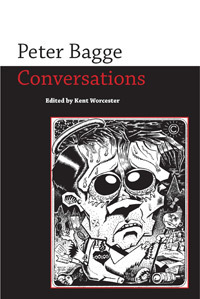
#18
Peter Bagge
Conversations
2015
Interivews with the creator of the comics series "Hate" and the former editor of the often outrageous "Weirdo" magazine
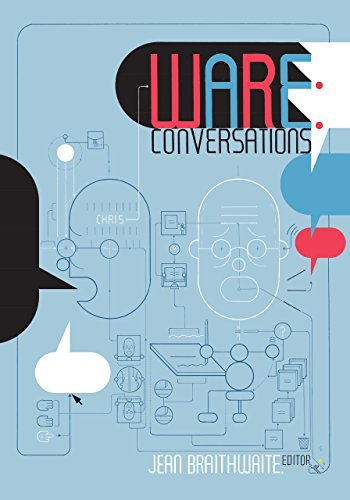
#19
Chris Ware
Conversations
2016
Virtuoso Chris Ware (b. 1967) has achieved some noteworthy firsts for comics. The Guardian First Book Award for Jimmy Corrigan: The Smartest Kid on Earth was the first major UK literary prize awarded for a graphic novel. In 2002 Ware was the first cartoonist included in the Whitney Biennial.
Like Art Spiegelman or Alison Bechdel, Ware thus stands out as an important crossover artist who has made the wider public aware of comics as literature. His regular New Yorker covers give him a central place in our national cultural conversation. Since the earliest issues of ACME Novelty Library in the 1990s, cartoonist peers have acclaimed Ware’s distinctive, meticulous visual style and technical innovations to the medium. Ware also remains a literary author of the highest caliber, spending many years to create thematically complex graphic masterworks such as Building Stories and the ongoing Rusty Brown.
Editor Jean Braithwaite compiles interviews displaying both Ware’s erudition and his quirky self-deprecation. They span Ware’s career from 1993 to 2015, creating a time-lapse portrait of the artist as he matures. Several of the earliest talks are reprinted from zines now extremely difficult to locate. Braithwaite has selected the best broadcasts and podcasts featuring the interview-shy Ware for this volume, including new transcriptions. An interview with Marnie Ware from 2000 makes for a delightful change of pace, as she offers a generous, supremely lucid attitude toward her husband and his work. Candidly and humorously, she considers married life with a cartoonist in the house. Brand-new interviews with both Chris and Marnie Ware conclude the volume.
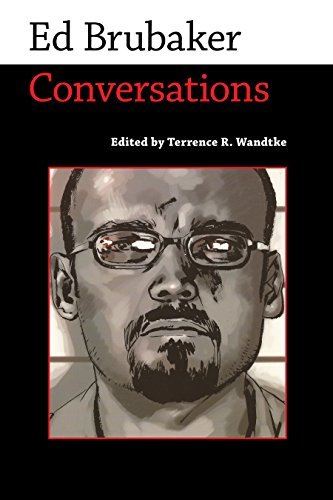
#20
Ed Brubaker
Conversations
2016
Ed Brubaker (b. 1966) has emerged as one of the most popular, significant figures in art comics since the 1990s. Most famous as the man who killed Captain America in 2007, Brubaker's work on company-owned properties such as Batman and Captain America and creator-owned series like Criminal and Fatale live up to the usual expectations for the superhero and crime genres. And yet, Brubaker layers his stories with a keen self-awareness, applying his expansive knowledge of American comic book history to invigorate his work and challenge the dividing line between popular entertainment and high art. This collection of interviews explores the sophisticated artist's work, drawing upon the entire length of the award-winning Brubaker's career.
With his stints writing Catwoman, Gotham Central, and Daredevil, Brubaker advanced the work of crime comic book writers through superhero stories informed by hard-boiled detective fiction and film noir. During his time on Captain America and his series Sleeper and Incognito, Brubaker revisited the conventions of the espionage thriller. With double agents who lose themselves in their jobs, the stories expose the arbitrary superhero standards of good and evil. In his series Criminal, Brubaker offered complex crime stories and, with a clear sense of the complicated lost world before the Comics Code, rejected crusading critic Fredric Wertham's myth of the innocence of early comics.
Overall, Brubaker demonstrates his self-conscious methodology in these often little-known and hard-to-find interviews, worthwhile conversations in their own right as well as objects of study for both scholars and researchers.
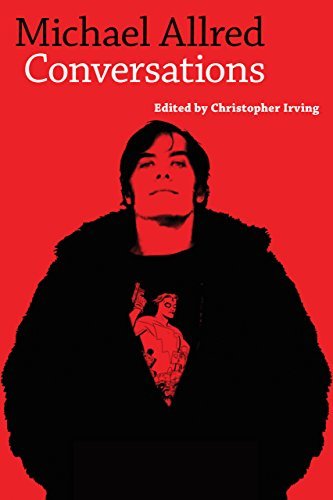
#21
Michael Allred
Conversations
2015
Michael Allred stands out for his blend of spiritual and philosophical approaches with an art style reminiscent of 1960s era superhero comics, which creates a mixture of both postmodernism and nostalgia. His childhood came during an era where pop art and camp embraced elements of kitsch and pastiche and introduced them into the lexicon of popular culture. Allred's use of both in his work as a cartoonist on his signature comic book Madman in the early 1990s offset the veiled autobiography of his own spiritual journey through Mormonism and struggles with existentialism.
Thematically, Allred's work deals heavily with the afterlife as his creations struggle with the grander questions—whether his modern Frankenstein hero Madman, cosmic rock 'n' roller Red Rocket 7, the undead heroine of iZombie (co-created with writer Chris Roberson), or the cast of superhero team book The Atomics. Allred also enjoys a position in the creator-driven generation that informs the current batch of independent cartoonists and has experienced his own brush with a major Hollywood studio's aborted film adaptation of Madman. Allred's other brushes with Hollywood include an independent adaptation of his comic book The G-Men from Hell, an appearance as himself in Kevin Smith's romantic comedy Chasing Amy (where he provided illustrations for a fictitious comic book), the television adaptation of iZombie, and an ongoing relationship with director Robert Rodriguez on a future Madman film.
Michael Allred: Conversations features several interviews with the cartoonist from the early days of Madman's success through to his current mainstream work for Marvel Comics. To read them is to not only witness the ever-changing state of the comic book industry, but also to document Allred's growth as a creative genius.

#22
Peter Kuper
Conversations
2016
Peter Kuper (b. 1958), one of America's leading cartoonists, has created work that is recognized around the world. His art has graced the pages and covers of numerous magazines and newspapers, including Time, Newsweek, the New Yorker, Harper's, Mother Jones, the Progressive, the Nation, and the New York Times . He is also a longtime contributor to Mad magazine, where he has been writing and drawing Spy vs. Spy for nearly two decades. He is the cofounder and coeditor of World War 3 Illustrated, the cutting-edge magazine devoted to political graphic art. Along with two dozen images, this volume features ten lively, informative interviews with Kuper, including a career-spanning lengthy new interview. The book also includes a quartet of revealing interviews with underground comix legends Robert Crumb and Vaughn Bode, Mad magazine publisher William Gaines, and Jack Kirby, co-creator of mainstream superheroes from the Avengers to the Fantastic Four. These interviews were conducted by Kuper and fellow artist Seth Tobocman in the early 1970s, when they were teenagers.
Peter Kuper's graphic novels have explored the medium from comics journalism and autobiography to fiction and literary adaptations. Among the works examined herein are his books The System, Sticks and Stones, Stop Forgetting to Remember, Diario de Oaxaca, and adaptations of Franz Kafka's The Metamorphosis and Upton Sinclair's The Jungle . Kuper also discusses his recently published opus, the 328-page Ruins, inspired by his experiences in Oaxaca, Mexico.
Most of the interviews collected in this book are either previously unpublished or long out of print, and they address such varied topics as the nuts and bolts of creating graphic novels, world travels, teaching at Harvard University, Hollywood deal-making, climate change, Spy vs. Spy, New York City in the 1970s and 1980s, Mad magazine, and World War 3 Illustrated .
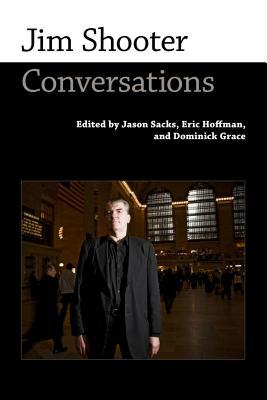
#23
Jim Shooter
Conversations
2017
As an American comic book writer, editor, and businessman, Jim Shooter (b. 1951) remains among the most important figures in the history of the medium. Starting in 1966 at the age of fourteen, Shooter, as the young protégé of verbally abusive DC editor Mort Weisinger, helped introduce themes and character development more commonly associated with DC competitor Marvel Comics. Shooter created several characters for the Legion of Super-Heroes, introduced Superman’s villain the Parasite, and jointly devised the first race between the Flash and Superman.
When he later ascended to editor-in-chief at Marvel Comics, the company, indeed the medium as a whole, was moribund. Yet by the time Shooter left the company a mere decade later, the industry had again achieved considerable commercial viability, with Marvel dominating the market. Shooter enjoyed many successes during his tenure, such as Chris Claremont and John Byrne’s run on the Uncanny X-Men, Byrne’s work on the Fantastic Four, Frank Miller’s Daredevil stories, Walt Simonson’s crafting of Norse mythology in Thor, and Roger Stern’s runs on Avengers and The Amazing Spider-Man, as well as his own successes writing Secret Wars and Secret Wars II . After a rift at Marvel, Shooter then helped lead Valiant Comics into one of the most iconic comic book companies of the 1990s, before moving to start-up companies Defiant and Broadway Comics.
Included here is a 1969 interview that shows a restless teenager; the 1973 interview that returned Shooter to comics; a discussion from 1980 during his pinnacle at Marvel; and two conversations from his time at Valiant and Defiant Comics. At the close, an extensive, original interview encompasses Shooter’s full career.

#24
Alison Bechdel
Conversations
2018
Due to the huge success of her graphic memoir Fun Home: A Family Tragicomic in 2006 and its subsequent Tony Award-winning musical adaptation in 2009, Alison Bechdel (b. 1960) has recently become a household name. However, Bechdel, who has won numerous awards including a MacArthur Fellowship, has been writing and drawing comics since the early 1980s. Her comic strip Dykes to Watch Out For (DTWOF) stood out as one of the first to depict lesbians in popular culture and is widely hailed as an essential LGBTQ resource.
It is also from this comic strip that the wildly popular Bechdel Test—a test to gauge positive female representation in film—obtained its name. While DTWOF secured Bechdel's role in the comics world and queer community long before her mainstream success, Bechdel now experiences notoriety that few comics artists ever achieve and that women cartoonists have never attained.
Spanning from 1990 to 2017, Alison Bechdel: Conversations collects twelve interviews that illustrate how Bechdel uses her own life, relationships, and contemporary events to expose the world to what she has referred to as the "fringes of acceptability"—the comics genre as well as queer culture and identity. These interviews reveal her intentionality in the use of characters, plots, structure, and cartooning to draw her readers toward disrupting the status quo.
Starting with her earliest interviews on public access television and in little-known comics and queer presses, Rachel R. Martin traces Bechdel's career from her days with DTWOF to her popularity with Fun Home and Are You My Mother? This volume includes her "one-off" DTWOF strips from November 2016 and March 2017 (not anthologized anywhere else) and in-depth discussions of her laborious creative process as well as upcoming projects.
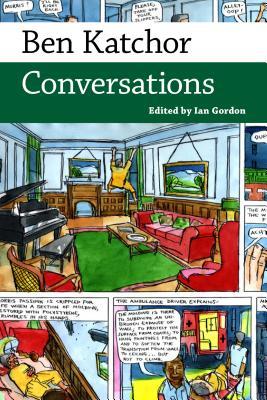
#25
Ben Katchor
Conversations
2018
Author Michael Chabon described Ben Katchor (b. 1951) as "the creator of the last great American comic strip." Katchor's comic strip Julius Knipl, Real Estate Photographer: Stories, which began in 1988, brought him to the attention of the readers of alternative weekly newspapers along with a coterie of artists who have gone on to public acclaim. In the mid-1990s, NPR ran audio versions of several Julius Knipl stories, narrated by Katchor and starring Jerry Stiller in the title role.
An early contributor to RAW, Katchor has contributed to Forward, New Yorker, Slate, and weekly newspapers. He edited and published two issues of Picture Story, which featured his own work, with articles and stories by Peter Blegvad, Jerry Moriarty, and Mark Beyer. In addition to being a dramatist, Katchor has been the subject of profiles in the New Yorker, a recipient of a MacArthur "Genius Grant" and a Guggenheim Fellowship, and a fellow at both the American Academy in Berlin and the New York Public Library.
Katchor's work is often described as zany or bizarre, and author Douglas Wolk has characterized his work as "one or two notches too far" beyond an absurdist reality. And yet the work resonates with its audience because, as was the case with Knipl's journey through the wilderness of a decaying city, absurdity was only what was usefully available; absurdity was the reality. Julius Knipl, Real Estate Photographer: Stories presaged the themes of Katchor's work: a concern with the past, an interest in the intersection of Jewish identity and a secular commercial culture, and the limits and possibilities of urban life.
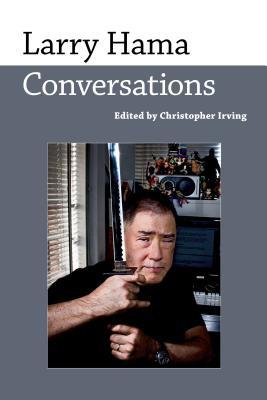
#26
Larry Hama
Conversations
2019
Larry Hama (b. 1949) is the writer and cartoonist who helped develop the 1980s G.I. Joe toy line and created a new generation of fans from the tie-in comic book. Through many interviews, this volume reveals that G.I. Joe is far from his greatest feat as an artist.
At different points in his life and career, Hama was mentored by comics legends Bernard Krigstein, Wallace Wood, and Neal Adams. Though their impact left an impression on his work, Hama has created a unique brand of storytelling that crosses various media. For example, he devised the character Bucky O'Hare, a green rabbit in outer space that was made into a comic book, toy line, video game, and television cartoon―with each medium in mind.
Hama also discusses his varied career, from working at Neal Adams and Dick Giordano’s legendary Continuity to editing a humor magazine at Marvel, developing G.I. Joe, and enjoying a long run as writer of Wolverine .
This volume also explores Hama's life outside of comics. He is an activist in the Asian American community, a musician, and an actor in film and stage. He has also appeared in minor roles on the television shows M\A\S\*H and Saturday Night Live and on Broadway.
Editor and historian Christopher Irving compiles six of his own interviews with Hama, some of which are unpublished, and compiled others that range through Hama’s illustrious career. The first academic volume on the artist, this collection gives a snapshot of Hama’s unique character-driven and visual approach to comics’ storytelling.
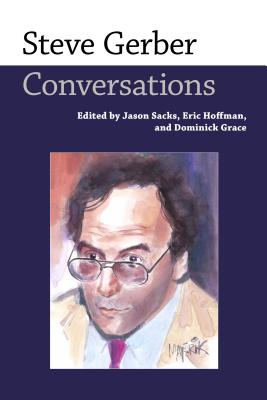
#27
Steve Gerber
Conversations
2019
Steve Gerber (1947–2008) is among the most significant comics writers of the modern era. Best known for his magnum opus Howard the Duck, he also wrote influential series such as Man-Thing, Omega the Unknown, The Phantom Zone, and Hard Time, expressing a combination of intelligence and empathy rare in American comics.
Gerber rose to prominence during the 1970s. His work for Marvel Comics during that era helped revitalize several increasingly clichéd generic conventions of superhero, horror, and funny animal comics by inserting satire, psychological complexity, and existential absurdism. Gerber's scripts were also often socially conscious, confronting, among other things, capitalism, environmentalism, political corruption, and censorship. His critique also extended into the personal sphere, addressing such taboo topics as domestic violence, racism, inequality, and poverty.
This volume follows Gerber’s career through a range of interviews, beginning with his height during the 1970s and ending with an interview with Michael Eury just before Gerber’s death in 2008. Among the pieces featured is a 1976 interview with Mark Lerer, originally published in the low-circulation fanzine Pittsburgh Fan Forum, where Gerber looks back on his work for Marvel during the early to mid-1970s, his most prolific period. This volume concludes with selections from Gerber’s dialogue with his readers and admirers in online forums and a Gerber-based Yahoo Group, wherein he candidly discusses his many projects over the years.
Gerber’s unique voice in comics has established his legacy. Indeed, his contribution earned him a posthumous induction into the Will Eisner Comic Book Hall of Fame.
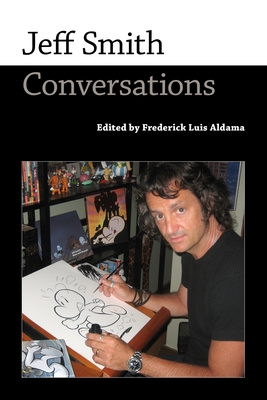
#28
Jeff Smith
Conversations
2019
First with his magisterial fantasy Bone to his mind-bending, time-warping sci-fi noir RASL, Paleolithic-set fantasy T�ki: Save the Humans, arthouse-styled superheroic miniseries Shazam!, and his latest children's book Smiley's Dream Book, Jeff Smith (b. 1960) has made an indelible mark on the comics industry.
As a child, Smith was drawn to Charles Schulz's Peanuts, Carl Barks' Donald Duck, and Walt Kelly's Pogo, and he began the daily practice of drawing his own stories. After writing his regular strip Thorn for The Ohio State University's student paper, Smith worked in animation before creating, writing, and illustrating his runaway success, Bone. A comedic fantasy epic, Bone focuses on the Bone cousins, white, bald cartoon characters run out of their hometown, lost in a distant, mysterious valley. The self-published series ran from 1991 to 2004 and won numerous awards, including ten Eisner Awards.
This career-spanning collection of interviews, ranging from 1999 to 2017, enables readers to follow along with Smith's development as an independent creator, writer, and illustrator.
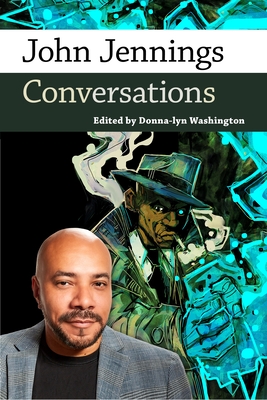
#29
John Jennings
Conversations
2020
John Jennings (b. 1970) is perhaps best known for his collaboration with Damian Duffy on the New York Times bestseller and Eisner Award-winning graphic novel adaptation of Octavia Butler's Kindred. However, Jennings is also a graphic designer and comic book scholar who, throughout his career, has conducted several interviews that shed light on the importance of Black Speculative narratives. The most enlightening of his interviews are brought together in John Jennings: Conversations.
As a collective these interviews explore folklore, systemic racism, his Mississippi roots, and the phrase Jennings cocreated, the Ethnogothic. Jennings discusses the necessity for black heroes, not just for the sake of diversity, but for inclusiveness, touching on the conventions he has cofounded, such as the Schomburg Center's Black Comic Book Festival in Harlem. He addresses the struggle to be financially compensated for work, and he speaks at length about how being a professor informs his craft where he continues to examine black stereotypes in popular culture with courses of his own design.
As a group the interviews in John Jennings: Conversations give a picture of a black man forging a way where comic books have afforded him a means to carve out an important space for people of color.

#30
Robert Kirkman
Conversations
2021
Robert Kirkman (b. 1978) is probably best known as the creator of The Walking Dead. The comic book and its television adaptation have reinvented the zombie horror story, transforming it from cult curiosity and parody to mainstream popularity and critical acclaim. In some ways, this would be enough to justify this career-spanning collection of interviews. Yet Kirkman represents much more than this single comic book title.
Kirkman’s story is a fanboy’s dream that begins with him financing his irreverent, independent comic book Battle Pope with credit cards. After writing major titles with Marvel comics ( Spider-Man, Captain America, and X-Men ), Kirkman rejected companies like DC and Marvel and publicly advocated for creator ownership as the future of the comics industry. As a partner at Image, Kirkman wrote not only The Walking Dead but also Invincible, a radical reinvention of the superhero genre.
Robert Conversations gives insight to his journey and explores technique, creativity, collaboration, and the business of comics as a multimedia phenomenon. For instance, while continuing to write genre-based comics in titles like Outcast and Oblivion Song, Kirkman explains his writerly bias for complex characters over traditional plot development. As a fan-turned-creator, Kirkman reveals a creator’s complex relationship with fans in a comic-con era that breaks down the consumer/producer dichotomy. And after rejecting company-ownership practices, Kirkman articulates a vision of the creator-ownership model and his goal of organic creativity at Skybound, his multimedia company. While Stan Lee was the most prominent comic book everyman of the previous era of comics production, Kirkman is the most prominent comic book everyman of this dynamic, evolving new era.